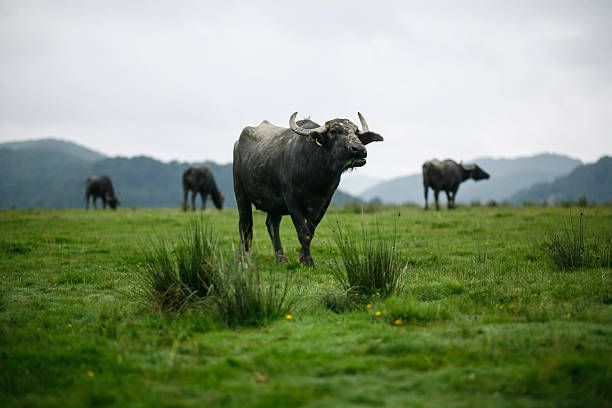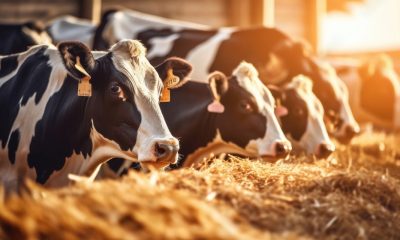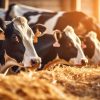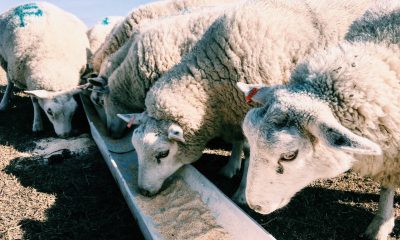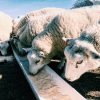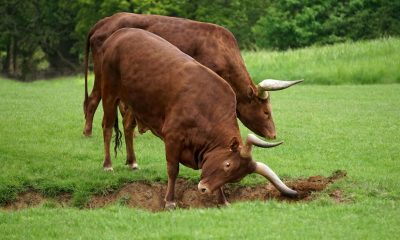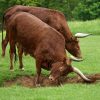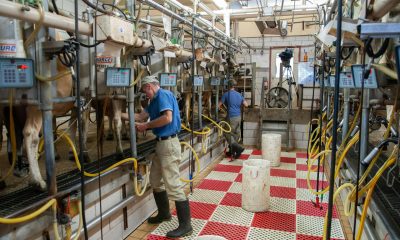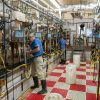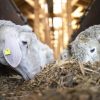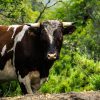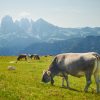Buffalo milk is the second most-consumed milk after cow’s milk. Buffalo milk is mostly produced from water buffaloes, and it has high nutritional value. In addition, buffalo milk is known to have a higher fat, vitamin, protein, lactose and mineral content than cow’s milk. Buffalo milk is also white and has a thicker consistency that makes it perfect for fat-based dairy products, which increase its market value.
The milk yield of a buffalo is related to its genetic potential, a buffalo cannot produce milk beyond its genetic potential. Moreover, to meet this genetic potential, one must consider many factors. These factors like nutrient supply, health, hygiene, milking technique, etc can drastically improve milk production in buffaloes.
1. Adequate supply of nutrients
Buffaloes, like cows, are ruminants. They digest the feed using microorganisms in the rumen for growth and metabolism. So, it is important to keep in mind that you are not feeding the buffalo but the microorganisms in the rumen. Thus, a healthy rumen environment is typical for producing and yielding good quality milk.
Proteins are one of the main nutrients in all ruminants, including buffaloes. They play a crucial role in milk production and help in the growth and repair of tissues in the animal. So it is important to make sure the buffalo gets a proper supply of good quality protein. The main protein sources include wheat, grains and oil-seed-cakes etc. So, the diet should include high quality concentrates. However, these protein supplements should be regulated to obtain optimum production.
Carbohydrates are also an important nutrient required for buffaloes in plenty, and they intake those in the form of fibres and starch. The most common and cheap source of fibres is roughages. Studies have also shown that the amount of green fodder positively affects milk production.
Like all ruminants, buffaloes also need adequate vitamins and minerals for milk production. Minerals like calcium and phosphorous increase milk production and help maintain bone strength.
All these nutrients and minerals should be balanced. The best way to balance these is to provide high-quality roughage and a smaller amount of high-quality concentrate.
2. By-pass proteins supplements
By-pass proteins are animal or plant-based proteins that can pass the rumen of the buffalo without breaking it down into the gastrointestinal tract (small intestine), where it can be broken down to produce amino acids to meet the requirements for milk production.
Studies have also shown that the addition of by-pass protein supplements and the basal feed can increase the efficiency of utilization of the basal feed and help maintain feed intake at high environmental temperatures and humidity. By-pass protein feed developed by National Dairy Development Board (NDDB) is a new generation feed in which almost 70 per cent of the proteins present in rumen undegradable protein.
3. Environmental conditions
There is a common misconception that buffaloes can survive in any condition, but this is not the case. Buffaloes generally have lower sweat gland intensity than cattle, so they cannot efficiently remove their body heat through sweat. In addition to that, the black coat of the buffaloes increases the amount of heat absorbed. This will eventually lead to thermal stress in buffaloes and low productivity.
The provision of an outer water pool for wallowing or space to dissipate additional heat can considerably increase buffaloes’ wellbeing, which in turn increases milk production, especially in hot climates.
4. Use appropriate milking techniques
An important point to note in this aspect is that buffalo letdown milk slower than cattle. The presence of a calf can stimulate the reflux for milk production. Buffaloes can give good milk yield till their ninth lactation, with peak yield starting from fourth. Milking them appropriately can also increase the yield. One should always remember to keep a routine while milking. A Buffalo should always be milked simultaneously and by the same milker for better yield. Taking too much time to milk the buffaloes can also reduce milk production and yield.
5. Feeding pattern
There are three types of feeding systems used for lactating buffaloes: extensive, semi-intensive, and intensive. Most farms employ a semi-intensive system where the buffalo is fed mainly on cut fodder and crop residues. A buffalo needs 0.5 kg of concentrate per litre of milk produced. Feeding buffaloes concentrate can increase the fat content in milk by 15%. This is because buffaloes release excess fat into the milk and only store a minimum amount of body fat.
Buffaloes have a large rumen volume, a high rate of salvation, a slow rate of digestion and high cellular activity. All these factors help buffaloes intake and digest considerably poor quality roughages. This intake and digestion can be further increased by feeding urea and molasses supplement mixtures. These are available as Urea Molasses Mineral Blocks (UMMB). Buffaloes fed with these supplements are known to show better milk productivity.
6. Health and Hygiene
Buffaloes are prone to infectious diseases and metabolic disorders due to their wallowing habits and other factors. This can reduce milk productivity. It is therefore important to keep them healthy and hygienic.
To reduce the chance of these infections, one should always make sure the animal is washed twice a day, and the dung is cleared a day thrice. Buffaloes should also be dewormed regularly because worm content in the stomach decreases productivity. Buffaloes should be kept in a mosquito-free shed, and they should not be beaten or threatened. Avoiding long exposure to direct sunlight and grazing freely for a few hours can increase metabolism and milk productivity.
In short, one should address all the needs of the buffalo for maximum productivity. Always remember that a happy animal produces the maximum milk.
